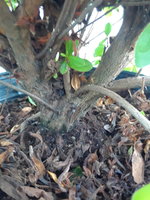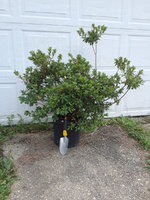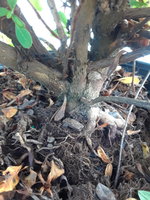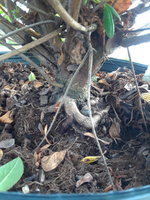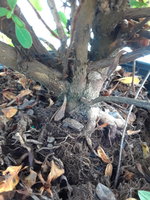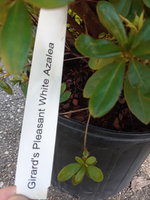Dsd- so I read through the overwintering guidelines and they are very thorough. The only question I have is- if they are so sensitive, why not bring them inside like a tropical? ...assuming adequate space and light of course.
Good question! So why shouldn’t one overwinter an azalea in a tropical set up?
Yes, one certainly could, if they would want to put up with all the issues of bringing and outside plant inside (fungus, bugs, light, root rot etc),… for one year… possibly a second (pushing it though)… at this point most likely the plant would begin a decline that would be hard to combat.
The main reason is almost all evergreen azaleas (there are always exceptions) need a required period of cold dormancy to muster their resources etc… for another growing season. (I think that’s in the dormancy write up somewhere). Anyways without the dormancy the tree gets run down... using up its stores until it’s running on empty.
We’ve overwintered a lot of azalea whips and some trees on heat mats with lights over the years in the garage. Never more than a winter for just this reason… and oh yes… all those fungus gnats that seem to miraculously appear!
On the other hand, Azaleas aren’t Shrinking Violets, many cultivars in ground are pretty hardy, but putting an azalea in a bonsai pot makes the tree much less hardy. Also most can’t take extended spells below perhaps 28F without damage in an ideal location. And self inflicted damage to one’s trees is anathema to good bonsai practice.
(This is very similar to deciduous bonsai trees - freezes inflect damage to the fine branching refinement we work so hard to create. In fact all the pros up here cold frame or cold greenhouse most all their bonsai for just this reason. Plus the attractive bonus of lengthening the growing season.)
btw: The reason why I hesitate to put a specific safe temperature is there are too many damage-causing variables in addition to temperature that could compound damage… wind, sun, rain on snow events etc….
In addition extended freezes also cause fine root damage, especially in the outer rim of the pot. This has a couple results. Roots have to come out of dormancy before the branches can grow (but not budding), so development hindered is shortening the growing season. Also azaleas don’t like to grow new roots in areas with dead roots… thus the effective root mass decreases …. and pockets of dead roots form.
Hope that answers your question.
Maybe
@Glaucus might add his thoughts too?
cheers
DSD sends

